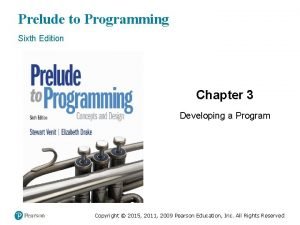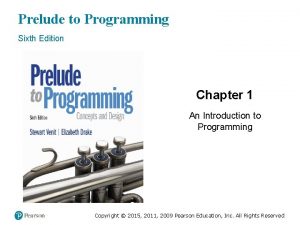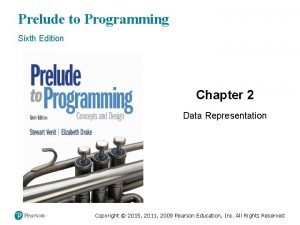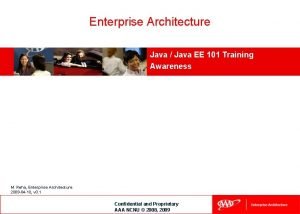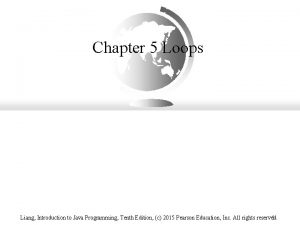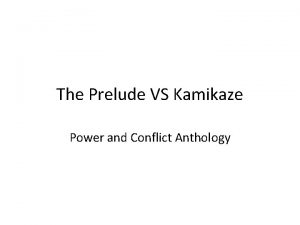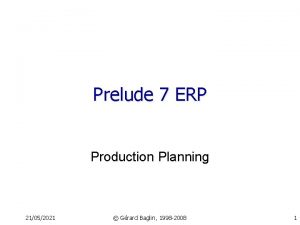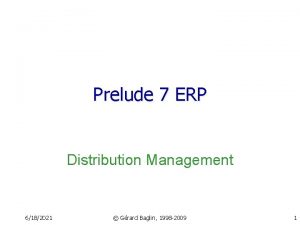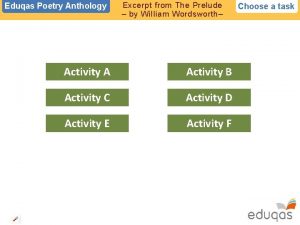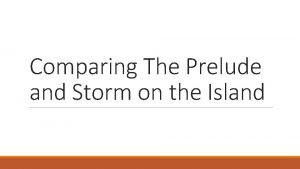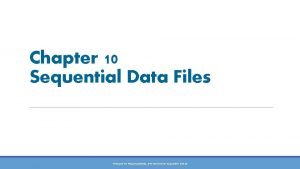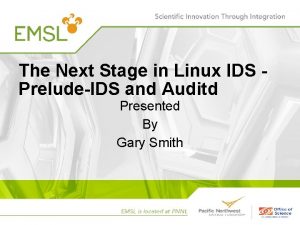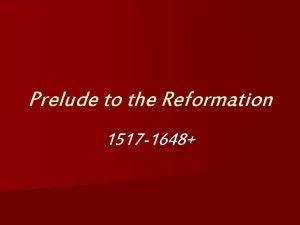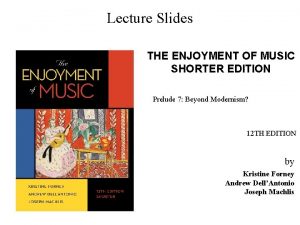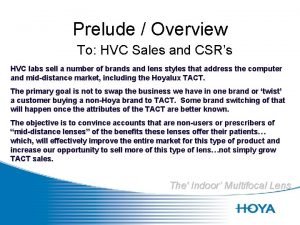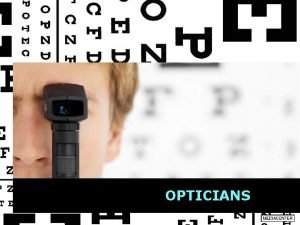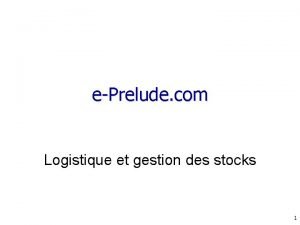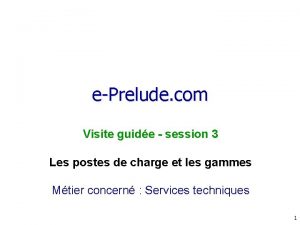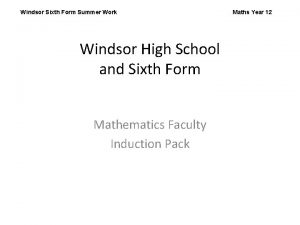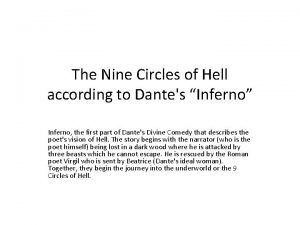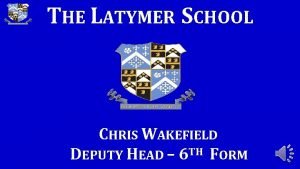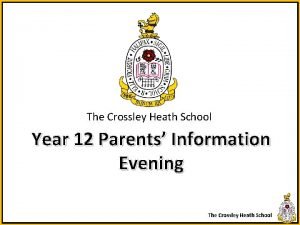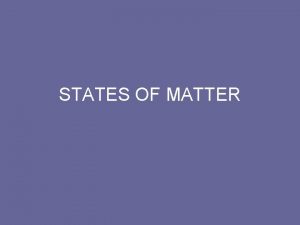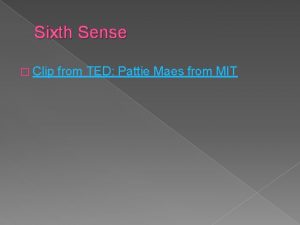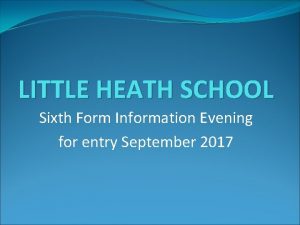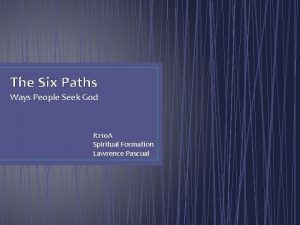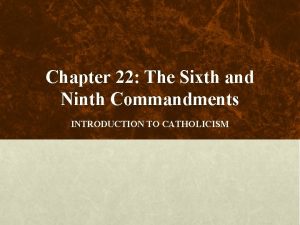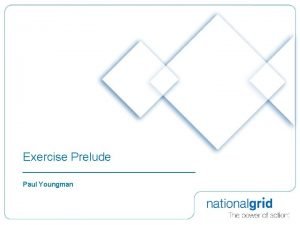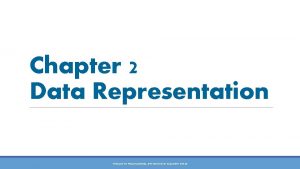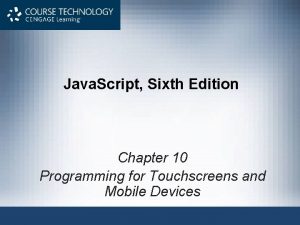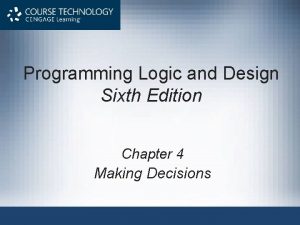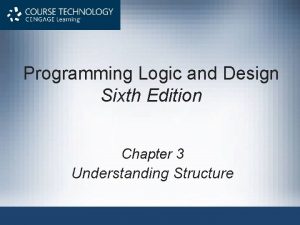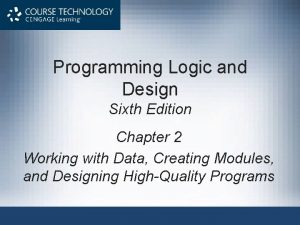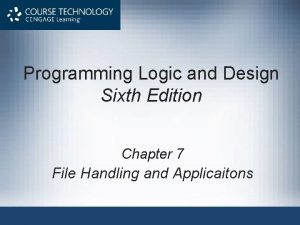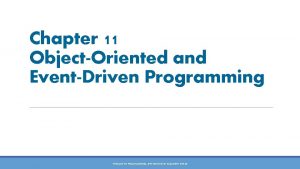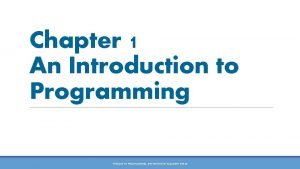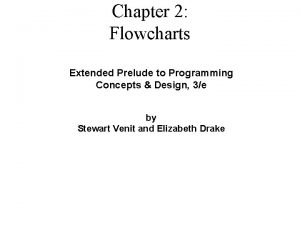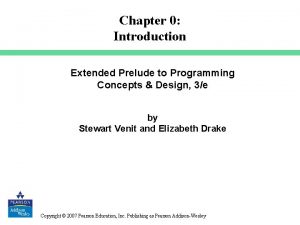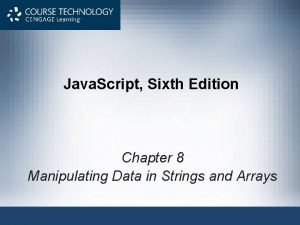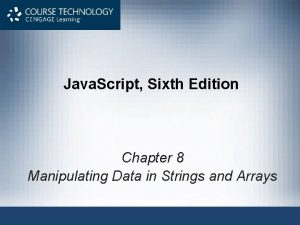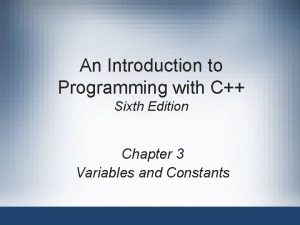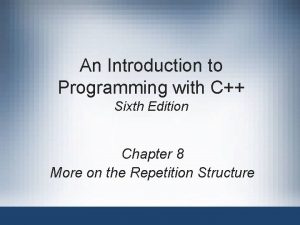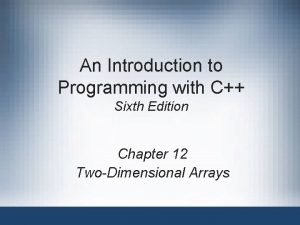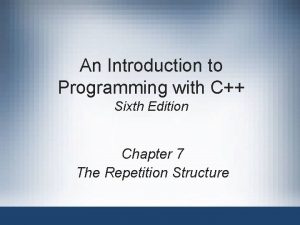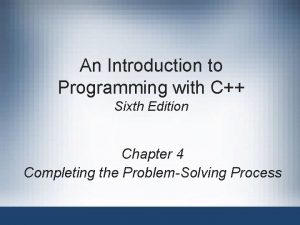Prelude to Programming Sixth Edition Chapter 2 Data









































































- Slides: 73

Prelude to Programming Sixth Edition Chapter 2 Data Representation Copyright © 2015, 2011, 2009 Pearson Education, Inc. All Rights Reserved

2. 1 Decimal and Binary Representation Copyright © 2015, 2011, 2009 Pearson Education, Inc. All Rights Reserved

2. 1 Decimal and Binary Representation • The number system we normally use is the decimal system. • It uses 10 as the base. • But a number system can use any base. • Computers work with the binary system (base 2). • Other systems used with computers are octal (base 8) and hexadecimal (base 16). Medical Law and Ethics, Fifth Edition © 2016, 2012, 2009 by Pearson Inc. Education, Inc. Copyright © 2015, Copyright 2011, 2009 Pearson Education, All Rights Bonnie F. Fremgen All Rights Reserved

Bases and Exponents Medical Law and Ethics, Fifth Edition © 2016, 2012, 2009 by Pearson Inc. Education, Inc. Copyright © 2015, Copyright 2011, 2009 Pearson Education, All Rights Bonnie F. Fremgen All Rights Reserved

The Decimal System Medical Law and Ethics, Fifth Edition © 2016, 2012, 2009 by Pearson Inc. Education, Inc. Copyright © 2015, Copyright 2011, 2009 Pearson Education, All Rights Bonnie F. Fremgen All Rights Reserved

Expanded Notation The ten digits that are used in the decimal system are 0, 1, 2, 3, 4, 5, 6, 7, 8, and 9. Any number in the decimal system can be written as a sum of each digit multiplied by the value of its column. This is called expanded notation. The number 6, 825 in the decimal system actually means: Medical Law and Ethics, Fifth Edition © 2016, 2012, 2009 by Pearson Inc. Education, Inc. Copyright © 2015, Copyright 2011, 2009 Pearson Education, All Rights Bonnie F. Fremgen All Rights Reserved

The Binary System (1 of 2) • The binary system follows the same rules as the decimal system. • The difference is that the binary system uses a base of 2 and has only two digits (0 and 1). • The rightmost column of the binary system is the one’s column It can contain a 0 or a 1. • The next number after one is two; in binary, a two is represented by a – one-hundred in decimal is represented by a 1 in the one-hundred’s ‒ in binary, a 1 in the column represents the number 4; i. e. 100 Medical Law and Ethics, Fifth Edition © 2016, 2012, 2009 by Pearson Inc. Education, Inc. Copyright © 2015, Copyright 2011, 2009 Pearson Education, All Rights Bonnie F. Fremgen All Rights Reserved

The Binary System (2 of 2) Medical Law and Ethics, Fifth Edition © 2016, 2012, 2009 by Pearson Inc. Education, Inc. Copyright © 2015, Copyright 2011, 2009 Pearson Education, All Rights Bonnie F. Fremgen All Rights Reserved

Converting the Decimal Number 29 sub 10. to Binary 29 is less than 32 but greater than 16 so put a 1 in the 16’s 29 − 16 = 13 13 is less than 16 but greater than 8 so put a 1 in the eight’s 13 − 8 = 5 5 is less than 8 but greater than 4 so put a 1 in the four’s 5− 4=1 1 is less than 2 so there is nothing in the two’s Put a 0 in the two’s column You have 1 left so put a 1 in the one’s Medical Law and Ethics, Fifth Edition © 2016, 2012, 2009 by Pearson Inc. Education, Inc. Copyright © 2015, Copyright 2011, 2009 Pearson Education, All Rights Bonnie F. Fremgen All Rights Reserved

Converting the Decimal Number 172 sub 10. to Binary There is one 128 in 172 so put a 1 in the 128’s 172− 128 = 44 44 is less than 64 so put a 0 in the 64’s 44 is less than 64 but greater than 32 so put a 1 in the 32’s 44 − 32 = 12 12 is less than 16 but greater than 8 so put a 0 in the 16’s (24) column and a 1 in the eight’s 12 − 8 = 4 Put a 1 in the four’s 4− 4=0 Put 0 s in the last two columns Medical Law and Ethics, Fifth Edition © 2016, 2012, 2009 by Pearson Inc. Education, Inc. Copyright © 2015, Copyright 2011, 2009 Pearson Education, All Rights Bonnie F. Fremgen All Rights Reserved

Converting Binary to Decimal To convert a binary number back to decimal, just add the value of each binary column. Convert the binary number to decimal • There is a 1 in the one’s column • There is a 1 in the two’s column so the value of that column is 2 • There is a 0 in the four’s column so the value of that is 0 • There is a 1 in the eight’s column so the value of that column is 8 1 + 2 + 0 + 8 = 11 • Therefore, Medical Law and Ethics, Fifth Edition © 2016, 2012, 2009 by Pearson Inc. Education, Inc. Copyright © 2015, Copyright 2011, 2009 Pearson Education, All Rights Bonnie F. Fremgen All Rights Reserved

Convert the Binary Number 10102 to Decimal There is a 0 in the one’s column There is a 1 in the two’s column so the value of that column is 2 There is a 0 in the four’s column so the value of that is 0 There is a 1 in the eight’s column so the value of that column is 8 There is a 0 in the 16’s column There is a 1 in the 32’s column so the value of that column is 32 There is a 0 in the 64’s column There is a 1 in the 128’s column so the value of that column is 128 0 + 2 + 0 + 8 + 0 + 32 + 0 + 128 = 170 Therefore, Medical Law and Ethics, Fifth Edition © 2016, 2012, 2009 by Pearson Inc. Education, Inc. Copyright © 2015, Copyright 2011, 2009 Pearson Education, All Rights Bonnie F. Fremgen All Rights Reserved

2. 2 The Hexadecimal System Medical Law and Ethics, Fifth Edition © 2016, 2012, 2009 by Pearson Inc. Education, Inc. Copyright © 2015, Copyright 2011, 2009 Pearson Education, All Rights Bonnie F. Fremgen All Rights Reserved

The Hexadecimal System Medical Law and Ethics, Fifth Edition © 2016, 2012, 2009 by Pearson Inc. Education, Inc. Copyright © 2015, Copyright 2011, 2009 Pearson Education, All Rights Bonnie F. Fremgen All Rights Reserved

Hexadecimal Digits • The decimal system uses 10 digits (0 through 9) in each column (base 10) • The binary system uses two digits (0 and 1) in each column (base 2) • The hexadecimal system uses 16 digits in each column (base 16) • How can you represent 10 in the one’s column in base 16? – no way to distinguish “ten” (written as 10) from “sixteen” (also written as 10 a one in the 16’s column and a zero in the one’s column) • Use uppercase letters to represent the digits 10 through 15 • hexadecimal digits are 0 through 9 and A through F Medical Law and Ethics, Fifth Edition © 2016, 2012, 2009 by Pearson Inc. Education, Inc. Copyright © 2015, Copyright 2011, 2009 Pearson Education, All Rights Bonnie F. Fremgen All Rights Reserved

Converting the Decimal Number 23 sub 10. to Hexadecimal Medical Law and Ethics, Fifth Edition © 2016, 2012, 2009 by Pearson Inc. Education, Inc. Copyright © 2015, Copyright 2011, 2009 Pearson Education, All Rights Bonnie F. Fremgen All Rights Reserved

Converting the Decimal Number 875 sub 10. to Hexadecimal 875 is less than 4, 096 but greater than 256 so there is nothing in the 4, 096’s Divide 875 by 256 to see how many 256 s there are 875 ÷ 256 = 3 with a remainder of 107 Put a 3 in the 256’s column 107 ÷ 16 = 6 with a remainder of 11 Put a 6 in the 16’s column 11 in decimal notation = B in hexadecimal notation Put a B in the one’s column Medical Law and Ethics, Fifth Edition © 2016, 2012, 2009 by Pearson Inc. Education, Inc. Copyright © 2015, Copyright 2011, 2009 Pearson Education, All Rights Bonnie F. Fremgen All Rights Reserved

Converting the Hexadecimal Number 123 D sub 16. to Decimal In expanded notation, this hexadecimal number is: D in hexadecimal is 13 in decimal, so: 4096 + 512 + 48 + 13 = 4669 Medical Law and Ethics, Fifth Edition © 2016, 2012, 2009 by Pearson Inc. Education, Inc. Copyright © 2015, Copyright 2011, 2009 Pearson Education, All Rights Bonnie F. Fremgen All Rights Reserved

Using Hexadecimal Notation (1 of 2) Notice: Medical Law and Ethics, Fifth Edition © 2016, 2012, 2009 by Pearson Inc. Education, Inc. Copyright © 2015, Copyright 2011, 2009 Pearson Education, All Rights Bonnie F. Fremgen All Rights Reserved

Using Hexadecimal Notation (2 of 2) It is common to write a long binary number in hexadecimal notation. The 15 hexadecimal digits represent all combinations of a 4 -bit binary number. Convert the following binary number to hexadecimal notation: 1. Separate the binary number into sets of 4 digits: 2. Refer to the table, if necessary, to make the conversions Medical Law and Ethics, Fifth Edition © 2016, 2012, 2009 by Pearson Inc. Education, Inc. Copyright © 2015, Copyright 2011, 2009 Pearson Education, All Rights Bonnie F. Fremgen All Rights Reserved

2. 3 Integer Representation • How computers process numbers depends on each number’s type. • Integers are stored and processed in quite a different manner from floating point numbers. • Even within the broad categories of integers and floating point numbers, there are more distinctions. • Integers can be stored as unsigned numbers (all nonnegative) or as signed numbers (positive, negative, and zero). • Floating point numbers also have several variations. Medical Law and Ethics, Fifth Edition © 2016, 2012, 2009 by Pearson Inc. Education, Inc. Copyright © 2015, Copyright 2011, 2009 Pearson Education, All Rights Bonnie F. Fremgen All Rights Reserved

Unsigned Integer Format • A computer processes information in the form of bytes. • Bytes are normally 8 to 16 bits. • Do this by adding 0 s to the left of the number to fill up as many places as needed for a byte. • This is called the unsigned form of an integer. Medical Law and Ethics, Fifth Edition © 2016, 2012, 2009 by Pearson Inc. Education, Inc. Copyright © 2015, Copyright 2011, 2009 Pearson Education, All Rights Bonnie F. Fremgen All Rights Reserved

Unsigned Binary Integers Medical Law and Ethics, Fifth Edition © 2016, 2012, 2009 by Pearson Inc. Education, Inc. Copyright © 2015, Copyright 2011, 2009 Pearson Education, All Rights Bonnie F. Fremgen All Rights Reserved

Overflow If you try to store an unsigned integer that is bigger than the maximum unsigned value that can be handled by that computer, you get a condition called overflow. Store the decimal integer in a 4 -bit memory location: • range of integers available in 4 -bit location is gives an overflow. • range of integers available in 16 -bit location is Therefore, attempting to store this number in a 16 -bit location gives an overflow. Medical Law and Ethics, Fifth Edition © 2016, 2012, 2009 by Pearson Inc. Education, Inc. Copyright © 2015, Copyright 2011, 2009 Pearson Education, All Rights Bonnie F. Fremgen All Rights Reserved

Range of Unsigned Integers Medical Law and Ethics, Fifth Edition © 2016, 2012, 2009 by Pearson Inc. Education, Inc. Copyright © 2015, Copyright 2011, 2009 Pearson Education, All Rights Bonnie F. Fremgen All Rights Reserved

Sign-and-Magnitude Format (1 of 3) The simple method to convert a decimal integer to binary works well to represent positive integers and zero. We need a way to represent negative integers. The sign-and-magnitude format is one way. The leftmost bit is reserved to represent the sign. The other bits represent the magnitude (or the absolute value) of the integer. Medical Law and Ethics, Fifth Edition © 2016, 2012, 2009 by Pearson Inc. Education, Inc. Copyright © 2015, Copyright 2011, 2009 Pearson Education, All Rights Bonnie F. Fremgen All Rights Reserved

Sign-and-Magnitude Format (2 of 3) Store the decimal integer using sign-and-magnitude format Since this is an 8 -bit memory location, 7 bits are used to store the magnitude of the number. Finally, look at the sign. This number is positive so add a 0 in the leftmost place to show the positive sign. Medical Law and Ethics, Fifth Edition © 2016, 2012, 2009 by Pearson Inc. Education, Inc. Copyright © 2015, Copyright 2011, 2009 Pearson Education, All Rights Bonnie F. Fremgen All Rights Reserved

Sign-and-Magnitude Format (3 of 3) Store the decimal integer using sign-and-magnitude format Since this is a 16 -bit memory location, 15 bits are used to store the magnitude of the number. Finally, look at the sign. This number is negative so add a 1 in the leftmost place to show the negative sign. Medical Law and Ethics, Fifth Edition © 2016, 2012, 2009 by Pearson Inc. Education, Inc. Copyright © 2015, Copyright 2011, 2009 Pearson Education, All Rights Bonnie F. Fremgen All Rights Reserved

The Problem of the Zero (a) Store the decimal integer 010 in an 8 -bit memory location using signand-magnitude format: Since this is an 8 -bit memory location, 7 bits are used to store the magnitude of the number. Look at the sign. Zero is considered a non-negative number so you should add a 0 in the leftmost place to show that it is not negative. is an 8 -bit binary integer in sign-and(b). . . but. . . given that magnitude form, find its decimal value: First convert the rightmost 7 bits to decimal to get Look at the leftmost bit; it is a 1. So the number is negative. Medical Law and Ethics, Fifth Edition © 2016, 2012, 2009 by Pearson Inc. Education, Inc. Copyright © 2015, Copyright 2011, 2009 Pearson Education, All Rights Bonnie F. Fremgen All Rights Reserved

One’s Complement Format (1 of 2) The fact that 0 has two possible representations in sign-and-magnitude format is one of the main reasons why computers usually use a different method to represent signed integers. There are two other formats that may be used to store signed integers. The one’s complement method is not often used, but it is explained here because it helps in understanding the most common format: two’s complement. To complement a binary digit, you simply change a 1 to a 0 or a 0 to a 1. In the one’s complement method, positive integers are represented as they would be in sign-and-magnitude format. The leftmost bit is still reserved as the sign bit. Medical Law and Ethics, Fifth Edition © 2016, 2012, 2009 by Pearson Inc. Education, Inc. Copyright © 2015, Copyright 2011, 2009 Pearson Education, All Rights Bonnie F. Fremgen All Rights Reserved

One’s Complement Format (2 of 2) The range of one’s complement integers is the same as the range of sign-and-magnitude integers. BUT… there are still two ways to represent the zero. Medical Law and Ethics, Fifth Edition © 2016, 2012, 2009 by Pearson Inc. Education, Inc. Copyright © 2015, Copyright 2011, 2009 Pearson Education, All Rights Bonnie F. Fremgen All Rights Reserved

Store the decimal integer in an 8 -bit memory location using one’s complement format Negative 37 sub 10. Since this is an 8 -bit memory location, 7 bits are used to store the magnitude uses 6 bits so add one 0 to the left to make up 7 bits: This number is negative. Complement all the digits by changing all the 0 s to 1 s and all the 1 s to 0 s Add a 1 in the 8 th bit location because the number is negative Medical Law and Ethics, Fifth Edition © 2016, 2012, 2009 by Pearson Inc. Education, Inc. Copyright © 2015, Copyright 2011, 2009 Pearson Education, All Rights Bonnie F. Fremgen All Rights Reserved

Converting One’s Complement to Decimal To convert a one’s complement number back to decimal: Look at the leftmost bit to determine the sign. If the leftmost bit is 0, the number is positive and can be converted back to decimal immediately. If the leftmost bit is a 1, the number is negative. • Un-complement the other bits (change all the 0 s to 1 s and all the 1 s to 0 s) • then convert the binary bits back to decimal • Remember to include the negative sign when displaying the result! Medical Law and Ethics, Fifth Edition © 2016, 2012, 2009 by Pearson Inc. Education, Inc. Copyright © 2015, Copyright 2011, 2009 Pearson Education, All Rights Bonnie F. Fremgen All Rights Reserved

The Problem of the Zero Again (1 of 2) a) Store the decimal integer one’s complement format: Since this is an 8 -bit memory location, 7 bits are used to store the magnitude of the number. Zero is considered non-negative so add a 0 in the leftmost place Medical Law and Ethics, Fifth Edition © 2016, 2012, 2009 by Pearson Inc. Education, Inc. Copyright © 2015, Copyright 2011, 2009 Pearson Education, All Rights Bonnie F. Fremgen All Rights Reserved

The Problem of the Zero Again (2 of 2) (b) but. . . given that is a binary number in one’s complement form, find its decimal value: Look at the leftmost bit. It is a 1 so you know the number is negative Since the leftmost bit is 1, all the other bits have been complemented. “un-complement” them to find the magnitude of the number. Medical Law and Ethics, Fifth Edition © 2016, 2012, 2009 by Pearson Inc. Education, Inc. Copyright © 2015, Copyright 2011, 2009 Pearson Education, All Rights Bonnie F. Fremgen All Rights Reserved

Why the Fuss About Nothing? (1 of 2) Why is there so much fuss about the zero? In a 4 -bit allocation, the bit-pattern still exists. Unless the computer knows what to do with it, the program will get an error. It might even not work at all. One possible scenario: If the result of a calculation using one’s complement was the computer would read this as – 0. If you then tried to add 1 to it, what would the answer be? Medical Law and Ethics, Fifth Edition © 2016, 2012, 2009 by Pearson Inc. Education, Inc. Copyright © 2015, Copyright 2011, 2009 Pearson Education, All Rights Bonnie F. Fremgen All Rights Reserved

Why the Fuss About Nothing? (2 of 2) – That would mean, using one’s complement, that – 0 + 1 = +0. This certainly would not be an irrelevant issue! Medical Law and Ethics, Fifth Edition © 2016, 2012, 2009 by Pearson Inc. Education, Inc. Copyright © 2015, Copyright 2011, 2009 Pearson Education, All Rights Bonnie F. Fremgen All Rights Reserved

Two’s Complement Integers To find the two’s complement of an X-bit number: 1. If the number is positive, just convert the decimal integer to binary and you are finished. 2. If the number is negative, convert the number to binary and find the one’s complement. 3. Add a binary 1 to the one’s complement of the number. 4. If this results in an extra bit (more than X bits), discard the leftmost bit. Medical Law and Ethics, Fifth Edition © 2016, 2012, 2009 by Pearson Inc. Education, Inc. Copyright © 2015, Copyright 2011, 2009 Pearson Education, All Rights Bonnie F. Fremgen All Rights Reserved

Rules of Binary Addition Medical Law and Ethics, Fifth Edition © 2016, 2012, 2009 by Pearson Inc. Education, Inc. Copyright © 2015, Copyright 2011, 2009 Pearson Education, All Rights Bonnie F. Fremgen All Rights Reserved

Finding the Two’s Complement of 8 -bit Binary Integers Medical Law and Ethics, Fifth Edition © 2016, 2012, 2009 by Pearson Inc. Education, Inc. Copyright © 2015, Copyright 2011, 2009 Pearson Education, All Rights Bonnie F. Fremgen All Rights Reserved

Carrying the 1 With Binary Addition Add zeros to the left to complete 8 bits: 00011000 Since the number is negative, do the one’s complement to get: 11100111 Now add binary 1 to this number: is 11101000 Medical Law and Ethics, Fifth Edition © 2016, 2012, 2009 by Pearson Inc. Education, Inc. Copyright © 2015, Copyright 2011, 2009 Pearson Education, All Rights Bonnie F. Fremgen All Rights Reserved

When the Two’s Complement Cannot Be Done integer: 10011111 already takes up 8 bits so there is nothing left for the sign bit complement binary number in an 8 -bit location. Medical Law and Ethics, Fifth Edition © 2016, 2012, 2009 by Pearson Inc. Education, Inc. Copyright © 2015, Copyright 2011, 2009 Pearson Education, All Rights Bonnie F. Fremgen All Rights Reserved

The Zero Solution (1 of 2) The number is positive so nothing more needs to be done Therefore, +0 in two’s complement in an 8 -bit location is 0000 Since the number is negative, do the one’s complement to get: 1111 Now add binary 1 to this number: Medical Law and Ethics, Fifth Edition © 2016, 2012, 2009 by Pearson Inc. Education, Inc. Copyright © 2015, Copyright 2011, 2009 Pearson Education, All Rights Bonnie F. Fremgen All Rights Reserved

The Zero Solution (2 of 2) Recall that Step 4 in the rules for converting to two’s complement states that, after the addition of 1 to the one’s complement, any digits to the left of the maximum number of bits (here, 8 bits) should be discarded. Discard the leftmost 1 Medical Law and Ethics, Fifth Edition © 2016, 2012, 2009 by Pearson Inc. Education, Inc. Copyright © 2015, Copyright 2011, 2009 Pearson Education, All Rights Bonnie F. Fremgen All Rights Reserved

Why the Method Works (1 of 2) How in the world does flipping digits and then adding 1 somehow end up with the negative of the number you started with? Example: using a 4 -bit allocation, since it is easy to manage. • A 4 -bit allocation allows for 16 binary numbers ranging from 0000 to 1111, or • Define the “flip side” of any number between 0 and 16 to be 16 minus that number. – using 4 bits, there are 16 possible numbers so the flip side of a number between 0 and 16 would be 16 minus that number. – the flip side of 4 is 16 – 4 = 12. – in two’s complement, the negative of a number is represented as the flip side of its positive value. Medical Law and Ethics, Fifth Edition © 2016, 2012, 2009 by Pearson Inc. Education, Inc. Copyright © 2015, Copyright 2011, 2009 Pearson Education, All Rights Bonnie F. Fremgen All Rights Reserved

Why the Method Works (2 of 2) – In a 4 -bit location, this would be 16 – 3 = 13. In an 8 -bit location, this would be 256 – 3 = 253 • In mathematical terms, this can be expressed as follows (assuming an X-bit memory allocation): – For a number, N, the two’s complement is: Medical Law and Ethics, Fifth Edition © 2016, 2012, 2009 by Pearson Inc. Education, Inc. Copyright © 2015, Copyright 2011, 2009 Pearson Education, All Rights Bonnie F. Fremgen All Rights Reserved

2. 4 Floating Point Representation • All floating point numbers have both an integer part and a fractional part, even if that fractional part is 0. – Note: 6 is an integer but 6. 0 is a floating point number • To represent a floating point number in binary: – divide the number into its parts: ▪ the sign (positive or negative) ▪ the whole number (integer) part ▪ the fractional part Medical Law and Ethics, Fifth Edition © 2016, 2012, 2009 by Pearson Inc. Education, Inc. Copyright © 2015, Copyright 2011, 2009 Pearson Education, All Rights Bonnie F. Fremgen All Rights Reserved

The Integer Part A specific bit is set aside to denote the sign. To convert the integer part to binary, simply convert the same way you convert positive integers to binary. The integer part of a floating point binary number is separated from the fractional part. The dot (or period) between the integer and fractional parts of a binary number will be referred to as a point. The point is, in effect, a binary point • it does the same thing as a decimal point in the decimal system. Medical Law and Ethics, Fifth Edition © 2016, 2012, 2009 by Pearson Inc. Education, Inc. Copyright © 2015, Copyright 2011, 2009 Pearson Education, All Rights Bonnie F. Fremgen All Rights Reserved

The Fractional Part • We know that the columns in the integer part of a binary number represent powers of 2. – The first column, 20 is the one’s column; the second column, 21 is the two’s column; and so on. • We can think of the fractional part in similar terms. – The decimal number 0. 1 represents , the decimal number 0. 01 represents and so on. – As the denominators get smaller, each decimal place is 10 raised to the next power. – In decimal notation: – Also can be represented as 10 -1, 10 -2, 10 -3, etc. Medical Law and Ethics, Fifth Edition © 2016, 2012, 2009 by Pearson Inc. Education, Inc. Copyright © 2015, Copyright 2011, 2009 Pearson Education, All Rights Bonnie F. Fremgen All Rights Reserved

Fractional Part of the Binary System Medical Law and Ethics, Fifth Edition © 2016, 2012, 2009 by Pearson Inc. Education, Inc. Copyright © 2015, Copyright 2011, 2009 Pearson Education, All Rights Bonnie F. Fremgen All Rights Reserved

Converting a Decimal Fraction to Binary (1 of 2) 1. How many bits are allowed for the fractional part of a given number? 2. Create a chart: 3. As you work, you can fill in the boxes in the third row. 4. If the number is equal to or greater than 0. 5, put a 1 in the 2– 1 column. Otherwise put a 0 in the 2– 1 column. Then subtract 0. 5 from the decimal number. If the result is 0, you are done. Medical Law and Ethics, Fifth Edition © 2016, 2012, 2009 by Pearson Inc. Education, Inc. Copyright © 2015, Copyright 2011, 2009 Pearson Education, All Rights Bonnie F. Fremgen All Rights Reserved

Converting a Decimal Fraction to Binary (2 of 2) 5. If the result is equal to or greater than 0. 25, put a 1 in the 2 -2 column. Then subtract 0. 25 from the decimal number. If the result is 0, you are done. 6. If the result of your subtraction is less than 0. 25, put a 0 in the 2 -2 column. Look at the next column. If your number is less than 0. 125, put a 0 in the 2 -3 column 7. Repeat with each subsequent column until the subtraction either gives a result of 0 or until you reach the end of the bits required. Medical Law and Ethics, Fifth Edition © 2016, 2012, 2009 by Pearson Inc. Education, Inc. Copyright © 2015, Copyright 2011, 2009 Pearson Education, All Rights Bonnie F. Fremgen All Rights Reserved

Convert the Decimal Number 0. 4 to a 6 -bit Binary Number (1 of 2) This number is less than 0. 5, so put a 0 in the The number is greater than 0. 25, so put a 1 in the , then subtract: 0. 4 - 0. 25 = 0. 15 is greater than 0. 125, so put a 1 in the and subtract: 0. 15 - 0. 125 = 0. 025 is less than the next column, 0. 0625, so put a 0 in the 0. 025 is less than the next column, 0. 03125, so put a 0 in the Medical Law and Ethics, Fifth Edition © 2016, 2012, 2009 by Pearson Inc. Education, Inc. Copyright © 2015, Copyright 2011, 2009 Pearson Education, All Rights Bonnie F. Fremgen All Rights Reserved

Convert the Decimal Number 0. 4 to a 6 -bit Binary Number (2 of 2) 0. 025 is greater than the next column, 0. 015625, so put a 1 in the Even though there is a remainder when you subtract 0. 025 – 0. 015625 = 0. 009375, you do not need to do anything more because the problem specified that only 6 bits are needed 0. 4 in decimal = 0. 011001 in a 6 -bit binary representation Medical Law and Ethics, Fifth Edition © 2016, 2012, 2009 by Pearson Inc. Education, Inc. Copyright © 2015, Copyright 2011, 2009 Pearson Education, All Rights Bonnie F. Fremgen All Rights Reserved

Putting the Two Parts Together: Store the Decimal Number 75. 804 as a Binary Number • Convert 75 to binary: 1001011 • Convert 0. 804 to binary: – You do not need to do anything more because the problem specified that only 4 bits are needed for the fractional part. Medical Law and Ethics, Fifth Edition © 2016, 2012, 2009 by Pearson Inc. Education, Inc. Copyright © 2015, Copyright 2011, 2009 Pearson Education, All Rights Bonnie F. Fremgen All Rights Reserved

2. 5 Putting It All Together Just converting a decimal floating point number to binary representation isn’t enough. There are several concepts to understand before seeing how a floating point number is actually represented inside the computer. While you will probably use a calculator for conversions, it is valuable to understand the process and will prove helpful when writing programs. Medical Law and Ethics, Fifth Edition © 2016, 2012, 2009 by Pearson Inc. Education, Inc. Copyright © 2015, Copyright 2011, 2009 Pearson Education, All Rights Bonnie F. Fremgen All Rights Reserved

Scientific Notation Computers are used for many scientific applications which often use very large or very small numbers. Example: the distance from Earth to our nearest star is 24, 698, 100, 000 miles. We would need a 49 -digit binary number to represent this in a computer. Example: The diameter of an atom would require at least a 30 -digit binary number. Humans deal with these almost-impossible-to-read numbers with scientific notation. Medical Law and Ethics, Fifth Edition © 2016, 2012, 2009 by Pearson Inc. Education, Inc. Copyright © 2015, Copyright 2011, 2009 Pearson Education, All Rights Bonnie F. Fremgen All Rights Reserved

Examples of Scientific Notation In scientific notation, a given number is written as a number between 1 and 9 multiplied by the appropriate power of 10. Examples: Medical Law and Ethics, Fifth Edition © 2016, 2012, 2009 by Pearson Inc. Education, Inc. Copyright © 2015, Copyright 2011, 2009 Pearson Education, All Rights Bonnie F. Fremgen All Rights Reserved

Exponential Notation In programming, instead of writing , we use the letter E followed by the given power. This is called exponential notation. Notice, you must include the sign of the exponent. Examples: 680, 000 = 6. 8 E+5 1, 502, 000 = 1. 502 E+9 8, 938, 000, 000 = 8. 938 E+12 0. 068=6. 8−E 0. 00001502=1. 502−E 0. 0000008938=8. 938−E Medical Law and Ethics, Fifth Edition © 2016, 2012, 2009 by Pearson Inc. Education, Inc. Copyright © 2015, Copyright 2011, 2009 Pearson Education, All Rights Bonnie F. Fremgen All Rights Reserved

Converting a Number from Exponential Notation to Ordinary Notation Move the decimal point the number of places indicated by the integer following E Examples: • Given: – write 1. 67 and move the decimal point 4 places to the left, filling in 3 zeros before 1 – This gives 0. 000167 • Given 4. 2 E+6 – move the decimal point 6 places to the right, filling in 5 zeros to the right of 2 – This gives 4200000, or as it is usually written, 4, 200, 000 Medical Law and Ethics, Fifth Edition © 2016, 2012, 2009 by Pearson Inc. Education, Inc. Copyright © 2015, Copyright 2011, 2009 Pearson Education, All Rights Bonnie F. Fremgen All Rights Reserved

Base 10 Normalization Normalized form is similar to scientific notation. Each normalized number has two parts: the scaled portion and the exponential portion. In scientific notation, the decimal point was moved so the first non-zero digit was immediately to the left of it. In normalized form, the decimal is moved so the first non-zero digit is immediately to the right of it. The value of the number is always maintained. To normalize a decimal number, after moving the decimal point, the number is multiplied by 10 raised to whatever power is necessary to return the number to its original value. Medical Law and Ethics, Fifth Edition © 2016, 2012, 2009 by Pearson Inc. Education, Inc. Copyright © 2015, Copyright 2011, 2009 Pearson Education, All Rights Bonnie F. Fremgen All Rights Reserved

Normalized Decimal Numbers Medical Law and Ethics, Fifth Edition © 2016, 2012, 2009 by Pearson Inc. Education, Inc. Copyright © 2015, Copyright 2011, 2009 Pearson Education, All Rights Bonnie F. Fremgen All Rights Reserved

Normalizing Binary Floating Point Numbers The IEEE Standard is the most widely accepted standard for representation of floating point numbers in a computer and uses normalized binary numbers. A normalized binary number consists of three parts: – the sign part – the exponential part – the mantissa. The mantissa is the binary equivalent to the scaled portion (as in previous slide) The Excess_127 system is used to represent the exponential portion Medical Law and Ethics, Fifth Edition © 2016, 2012, 2009 by Pearson Inc. Education, Inc. Copyright © 2015, Copyright 2011, 2009 Pearson Education, All Rights Bonnie F. Fremgen All Rights Reserved

Excess_127 • The Excess_127 system Is used to store the exponential value of a normalized binary number. • To represent an 8 -bit number in the Excess_127 system: – Add 127 to the number – Change the result to binary – Add zeros to the left to make up 8 bits Medical Law and Ethics, Fifth Edition © 2016, 2012, 2009 by Pearson Inc. Education, Inc. Copyright © 2015, Copyright 2011, 2009 Pearson Education, All Rights Bonnie F. Fremgen All Rights Reserved

Base 2 Normalization • The process is similar to the one followed to normalize a decimal number. • The point is moved but it is moved so that the first nonzero number (a 1) is immediately to the left of the point. • Then multiply the number by the power of 2 needed to express the original value of the number. • Not necessary to worry about the sign of the number since, in normalized form, the sign bit takes care of this. Medical Law and Ethics, Fifth Edition © 2016, 2012, 2009 by Pearson Inc. Education, Inc. Copyright © 2015, Copyright 2011, 2009 Pearson Education, All Rights Bonnie F. Fremgen All Rights Reserved

Examples • Normalize the Binary Number +10110 – Move the point to the left 4 places to get 1. 0110 – Since the point was moved 4 places to the left, the number is • Normalize the Binary Number +0. 11110011 – Move the point to the right 1 place to get 1. 1110011 – Since the point was moved 1 place to the right, the number needs to be multiplied by 2– 1 to get the original number Medical Law and Ethics, Fifth Edition © 2016, 2012, 2009 by Pearson Inc. Education, Inc. Copyright © 2015, Copyright 2011, 2009 Pearson Education, All Rights Bonnie F. Fremgen All Rights Reserved

Single Precision Floating Point Numbers (1 of 2) IEEE has defined standards for storing floating point numbers. The most common standard is single precision floating point. • In single precision format, a normalized floating point number has three parts. – The sign is stored as a single bit – The exponent is stored in 8 bits – The mantissa is stored in the rest of the bits (23 bits) – Single precision uses 32 bits in total to store one floating point number Medical Law and Ethics, Fifth Edition © 2016, 2012, 2009 by Pearson Inc. Education, Inc. Copyright © 2015, Copyright 2011, 2009 Pearson Education, All Rights Bonnie F. Fremgen All Rights Reserved

Single Precision Floating Point Numbers (2 of 2) • There is also a double precision representation which allows for a much larger range of numbers. – The sign of the number still uses one bit – The exponent uses 11 bits – The mantissa uses 52 bits. – An 11 -bit exponent uses the Excess_1023 system and can handle exponents up to – Double precision uses 64 bits in total to store one floating point number Medical Law and Ethics, Fifth Edition © 2016, 2012, 2009 by Pearson Inc. Education, Inc. Copyright © 2015, Copyright 2011, 2009 Pearson Education, All Rights Bonnie F. Fremgen All Rights Reserved

Converting a Decimal Number to Single Precision Floating Point Binary (1 of 2) • The sign bit: If the number is positive, put a 0 in the leftmost bit. If it is negative, put a 1 in the leftmost bit. • Convert the number to binary. If there is an integer and a fractional part, convert the whole number to binary • Normalize the number. Move the point so it is directly to the right of the first non-zero number. • Count the number of places you moved the point. This is your exponent. If you moved the point to the right, your exponent is negative. If you moved the point to the left, your exponent is positive. Medical Law and Ethics, Fifth Edition © 2016, 2012, 2009 by Pearson Inc. Education, Inc. Copyright © 2015, Copyright 2011, 2009 Pearson Education, All Rights Bonnie F. Fremgen All Rights Reserved

Converting a Decimal Number to Single Precision Floating Point Binary (2 of 2) • The exponent part: Convert your exponent to a binary number, using the Excess_127 system. Store this number in the 8 bits to the right of the sign bit. • The mantissa: Use the number from Step 3 is used to find the mantissa. When storing the normalized part of the number, the 1 to the left of the point is discarded. Everything to the right of the point is now called the mantissa. Medical Law and Ethics, Fifth Edition © 2016, 2012, 2009 by Pearson Inc. Education, Inc. Copyright © 2015, Copyright 2011, 2009 Pearson Education, All Rights Bonnie F. Fremgen All Rights Reserved

Represent in single precision floating point the normalized number: Negative 2 to the power of negative 9 times 1 period 0 0 1 0 1 1. The sign is negative so the leftmost bit is a 1 – Add: – Convert 118 to binary: 01110110 – Store this number in the next 8 bits The rest of the number is 1. 00001011 – Discard the leftmost 1 (the one to the left of the point) and store the remainder of the number in the last 23 bits This number takes up 8 bits while, in single-precision floating point, the mantissa is 23 bits long. You must add 15 0’s at the end to complete 23 bits. Medical Law and Ethics, Fifth Edition © 2016, 2012, 2009 by Pearson Inc. Education, Inc. Copyright © 2015, Copyright 2011, 2009 Pearson Education, All Rights Bonnie F. Fremgen All Rights Reserved

Hexadecimal Representation It is much easier to read a hexadecimal number than to read a long string of 0 s and 1 s. Single precision floating point numbers are often changed to hexadecimal. It’s easy to convert binary to hexadecimal: – Divide the binary number into groups of four digits – Convert each group to a single hexadecimal number Example (from previous slide): Medical Law and Ethics, Fifth Edition © 2016, 2012, 2009 by Pearson Inc. Education, Inc. Copyright © 2015, Copyright 2011, 2009 Pearson Education, All Rights Bonnie F. Fremgen All Rights Reserved

Copyright Medical Law and Ethics, Fifth Edition © 2016, 2012, 2009 by Pearson Inc. Education, Inc. Copyright © 2015, Copyright 2011, 2009 Pearson Education, All Rights Bonnie F. Fremgen All Rights Reserved
 Prelude to programming 6th edition
Prelude to programming 6th edition Prelude to programming 6th edition
Prelude to programming 6th edition Prelude to programming 6th edition
Prelude to programming 6th edition Inicum
Inicum Rubber baby buggy bumpers tongue twister lyrics
Rubber baby buggy bumpers tongue twister lyrics Biochemistry sixth edition 2007 w.h. freeman and company
Biochemistry sixth edition 2007 w.h. freeman and company Computer architecture a quantitative approach sixth edition
Computer architecture a quantitative approach sixth edition Automotive technology sixth edition
Automotive technology sixth edition Automotive technology sixth edition
Automotive technology sixth edition Citation sample pdf
Citation sample pdf Computer architecture a quantitative approach 6th
Computer architecture a quantitative approach 6th Precalculus sixth edition
Precalculus sixth edition Principles of economics sixth edition
Principles of economics sixth edition Computer architecture a quantitative approach sixth edition
Computer architecture a quantitative approach sixth edition Mis chapter 6
Mis chapter 6 Using mis (10th edition) 10th edition
Using mis (10th edition) 10th edition The sixth extinction chapter 3 summary
The sixth extinction chapter 3 summary Java enterprise architecture
Java enterprise architecture Introduction to java programming 10th edition quizzes
Introduction to java programming 10th edition quizzes Expert systems: principles and programming, fourth edition
Expert systems: principles and programming, fourth edition Perbedaan linear programming dan integer programming
Perbedaan linear programming dan integer programming Greedy programming vs dynamic programming
Greedy programming vs dynamic programming Windows 10 system programming, part 1
Windows 10 system programming, part 1 Linear vs integer programming
Linear vs integer programming Definisi linear
Definisi linear How is the power of nature presented in the prelude
How is the power of nature presented in the prelude Prelude boat stealing
Prelude boat stealing Prelude 7 erp
Prelude 7 erp Prelude erp
Prelude erp Extract from the prelude william wordsworth
Extract from the prelude william wordsworth Skating william wordsworth
Skating william wordsworth E-prelude.com
E-prelude.com E-prelude.com
E-prelude.com Excerpt from the prelude
Excerpt from the prelude Storm on the island and the prelude comparison
Storm on the island and the prelude comparison Sequential circuits prelude
Sequential circuits prelude Maurane sur un prélude de bach analyse
Maurane sur un prélude de bach analyse Prelude ids
Prelude ids Prelude to reformation
Prelude to reformation Chapter 63 staged sentiment
Chapter 63 staged sentiment Specsavers prelude
Specsavers prelude Optical industry
Optical industry The prelude annotated
The prelude annotated Eprelude
Eprelude E-prelude
E-prelude Nuast school holidays
Nuast school holidays Sixth form college windsor
Sixth form college windsor Shenfield sixth form
Shenfield sixth form Transition words for 6th grade
Transition words for 6th grade The sixth commandment catholic
The sixth commandment catholic Second circle of hell
Second circle of hell Latymer sixth form
Latymer sixth form Crossley heath sixth form
Crossley heath sixth form Sixth state of matter
Sixth state of matter Sixth sunday of easter year c
Sixth sunday of easter year c Sixth sense ted
Sixth sense ted Little heath sixth form
Little heath sixth form Hamlet sixth soliloquy
Hamlet sixth soliloquy Brighouse high school sixth form
Brighouse high school sixth form Blackfen sixth form
Blackfen sixth form Sixth sense technology seminar report
Sixth sense technology seminar report Barry 6th form
Barry 6th form Sixth freedom traffic
Sixth freedom traffic Solihull technical college
Solihull technical college Bfs sixth form
Bfs sixth form Walton high sixth form application
Walton high sixth form application Walton sixth form
Walton sixth form Fellowship with god in the sixth path
Fellowship with god in the sixth path Sixth avenue medical pharmacy
Sixth avenue medical pharmacy Shenfield high school open evening
Shenfield high school open evening In the sixth month the angel gabriel
In the sixth month the angel gabriel The sixth and ninth commandments
The sixth and ninth commandments Winchmore sixth form entry requirements
Winchmore sixth form entry requirements Wickersley sixth form
Wickersley sixth form
